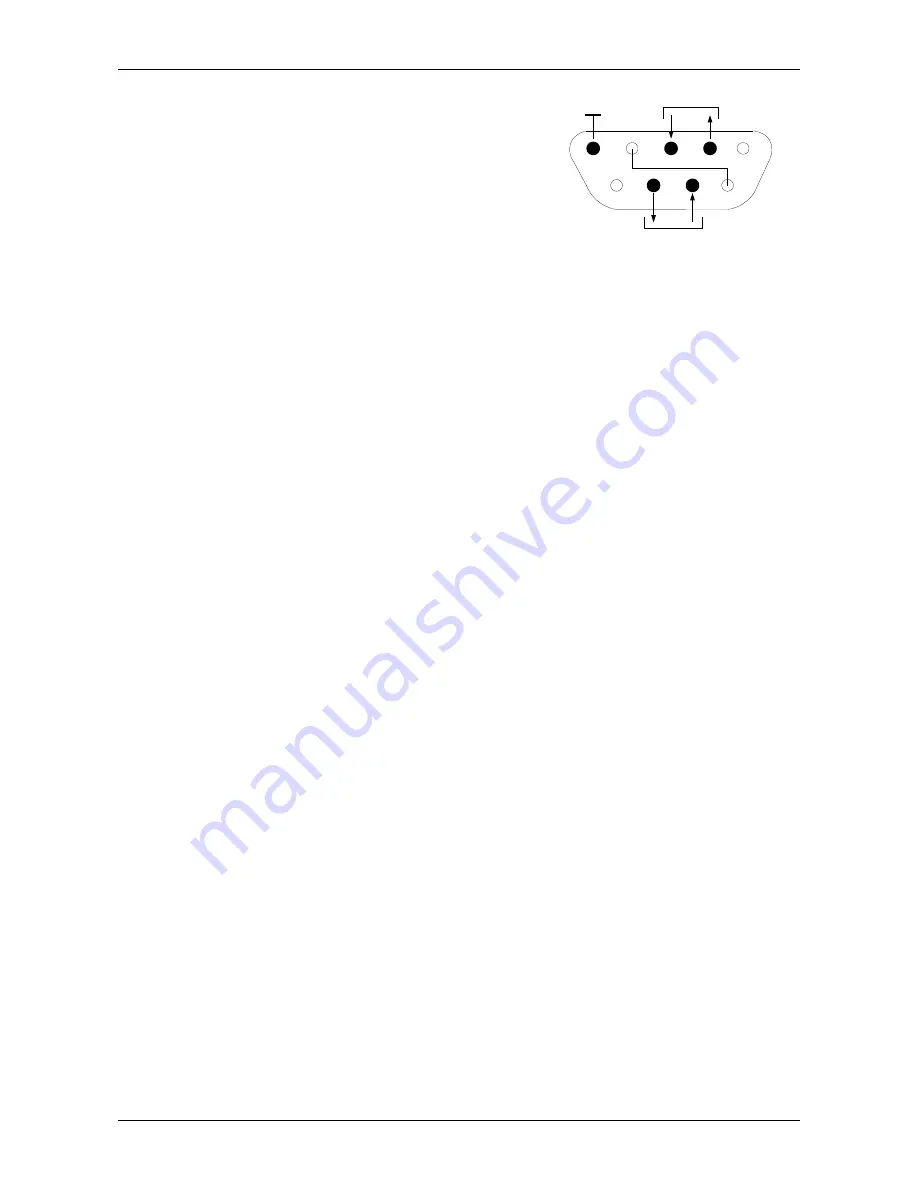
CHAPTER 1 GETTING STARTED
Ohaus Corporation www.ohaus.com 16
Adventurer ™ Balances Service Manual
1.9 RS232 (DB9) Pin Connections
Pin 2: Balance transmit line (TxD)
Pin 3: Balance receive line (RxD)
Pin 5: Ground signal (GND)
Pin 7: Clear to send (hardware handshake) (CTS)
Pin 8: Request to send (hardware handshake) (RTS)
1.10 The USB Interface
The Ohaus USB Interface is a unique solution to the problem of connecting a balance to a
computer using a Universal Serial Bus (USB). USB devices are categorized into classes such as
disk drives, digital cameras, printers, etc. Balances do not have a commonly used class so the
Ohaus USB interface uses a generic interface based on the RS232 serial standard.
Data sent from the balance to a computer is in USB format. The USB data is directed to a
virtual
port
.
This port then appears as an RS232 port to the application program.
When sending a command from a computer to the balance, the application program sends a
command to the
virtual port
as if it were an RS232 port. The computer then directs the command
from the
virtual port
to the computers USB connector where the balance is connected. The port
receives the USB signal and reacts to the command.
The USB Interface includes a CD with the software drivers to create the required
virtual port
on the
computer.
1.11 System Requirements
PC running Windows 98
®
, Windows 98SE
®
, Windows ME
®
, Windows 2000
®
, Windows XP
®
,
Windows 7
®
or Windows 7
®
Available USB port (Type A, 4-pin, female)
1.12 USB Connection
The balance’s USB port terminates with a 4-pin, female, USB Type B connector.
A USB Cable (type B/male to type A/male) is required (not supplied).
1. Ensure that the balance is powered on and working properly.
2. Power on the computer and verify that its USB port is enabled and working properly.
3.
Plug the cable’s USB connectors into the computer’s USB port and the balance’s USB port.
Windows® should detect a USB device and the New Hardware Wizard will be initialized.
1
5
6
9
Data
GND
Handshake
Female
















































